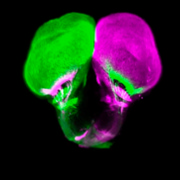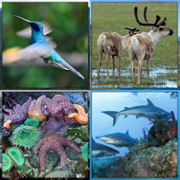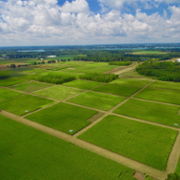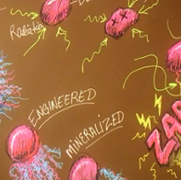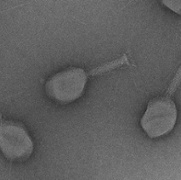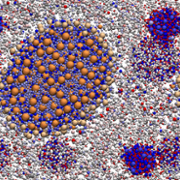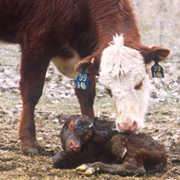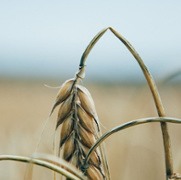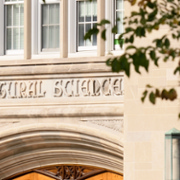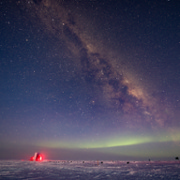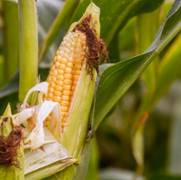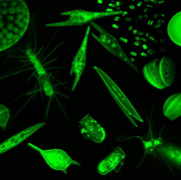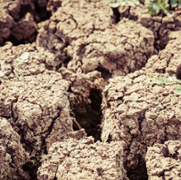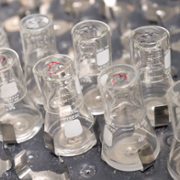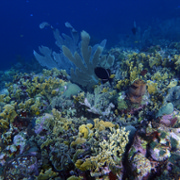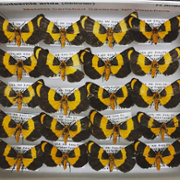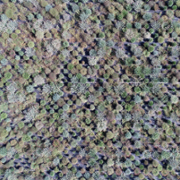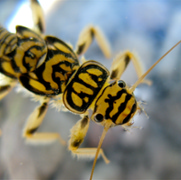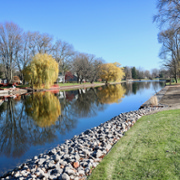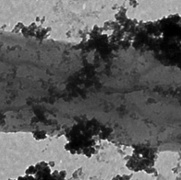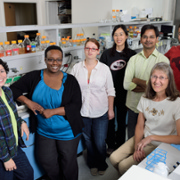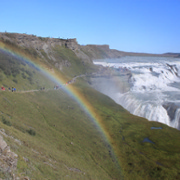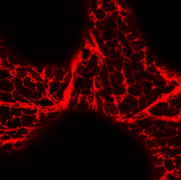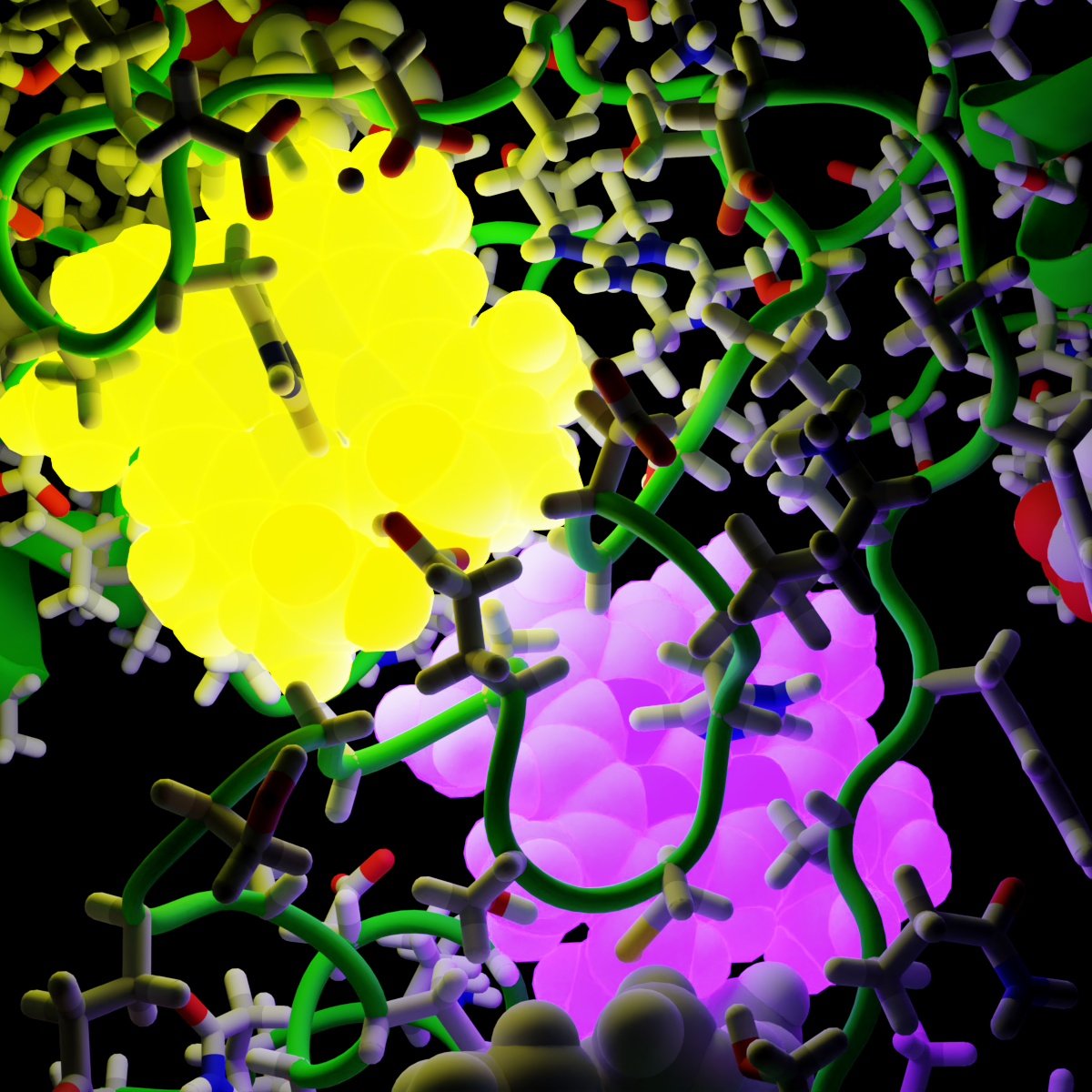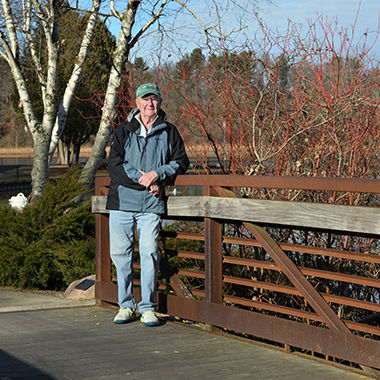News
April 8, 2021
The network of nerves connecting our eyes to our brains is sophisticated and researchers have now shown that it evolved much earlier than previously thought, thanks to an unexpected source: the gar fish. MSU’s Ingo Braasch helped an international research team show that this connection scheme was already present in ancient fish at least 450 million years ago, making it about 100 million years older than previously believed. The work was published in the journal Science on April 8.
April 5, 2021
Should humans use technology to cool Earth? How would organisms and ecosystems respond? Every month since September 2019, a team of internationally recognized experts in climate science and ecology, the Climate Intervention Biology Working Group, has gathered remotely to bring science to bear on the important question of climate intervention. The pioneering group, co-led by the MSU community ecologist Phoebe Zarnetske, published their seminal paper in the most recent Proceedings of the National Academy of Sciences of the United States.
April 5, 2021
MSU’s Long Term Ecological Research (LTER) site, located at the W.K. Kellogg Biological Station, was founded in 1988 to employ and understand the ecology of Midwest cropping systems and agricultural landscapes. When KBS passed the 30-year mark in 2018, three former KBS researchers, Sarah Cusser, Jackson Helms and Christie Bahlai, decided the 30th anniversary was not only a significant milestone, but a good time to ask questions about LTER’s database. Thanks to their efforts, which were recently published in Ecology Letters, they now know that ecological investigations of at least nine years are needed to achieve significant, consistent results related to accelerated climate and land use change.
April 1, 2021
Gemma Reguera, Michigan State University environmental microbiologist, was named editor-in-chief of Applied and Environmental Microbiology (AEM), one of two new editors for two of the 16 peer-reviewed journals published by the American Society of Microbiology (ASM).Reguera will begin her term on July 1.
March 29, 2021
In a recent edition of The Conversation, Joseph Krajcik, MSU Lappan-Phillips Professor of Science Education and director of the CREATE for STEM Institute, along with MSU colleague Barbara Schneider, John A. Hannah Chair in the College of Education and the Department of Sociology, share their findings around project-based learning and how it expands students' understanding of scientific concepts and their social-emotional skills.
March 29, 2021
Uncovering the genetics behind a six-decade long cholera pandemic is being funded with a $2.8 million National Institutes of Health grant awarded to MSU microbiologist Chris Waters. The research project will investigate 36 genes key to the persistence of cholera to increase understanding of how bacterial pandemics surface as well as boost development of new viral therapies to treat bacterial infections.
March 27, 2021
Under the direction of MSU physiologist Erica Wehrwein, the Physiology Majors Interest Group (P-MIG) published 14 manuscripts in a special collection of papers featured in Advances in Physiology Education. The papers in this first-of-its-kind special collection represent the culmination of recent P-MIG efforts and capture the breadth of the group’s work, including its history and purpose.
March 26, 2021
Life is messy, even at microscopic and molecular level, but MSU researchers, led by Michael Feig and Lisa Lapidus, have shown that some straightforward science can still account for important biological behavior. The team showed that relatively simple characteristics help RNA and proteins organize themselves. Researchers believe that when these biomolecules congregate, or condense, it can help speed up or enhance a range of cellular functions. Their results were recently published in the journal eLife.
March 18, 2021
In a paper recently published in Nature Communications, scientists in Susannah Dorfman’s Experimental Mineralogy Lab at Michigan State University redefined the conditions under which carbonates can exist in the earth’s lower mantle, adding to our understanding of the deep carbon cycle and the earth’s evolution.
March 17, 2021
MSU microbiologist Sean Crosson and colleague Aretha Fiebig brought sophisticated genomics tools from the lab to the to the field in a recent study published in the Proceedings of the National Academy of Science. Using unique, barcoded bacteria, they gained new insight into Brucellosis, a deadly disease capable of infecting humans that has been circulating among cows in the United States for a hundred years.
March 14, 2021
Plants were evolving for hundreds of millions of years before humans started cultivating them for food. So when the first farmers showed up some 12,000 years ago, plants had already picked up some inefficiencies — that is, adaptations that helped the plants survive but also limited their productivity as crops. Today, some of those inefficiencies appear to be getting worse as the planet warms. MSU's Berkley Walker and Eastern Michigan University's Aaron Liepman are leading an NSF grant project to better understand one of those inefficiencies with the hopes of turning the tide.
March 11, 2021
Six Michigan State University College of Natural Science (NatSci) faculty members and graduate students have received 2020-2021 All-University Awards in recognition of their outstanding contributions to education and research. The NatSci recipients are: Teena Gerhardt, Darren Incorvaia, Erica Wehrwein, Christopher Werneke, Willie Wong and Zhiyong Xi.
March 10, 2021
On December 6, 2016, a high-energy particle was hurtling through space at nearly the speed of light and happened to smash into an electron deep inside the South Pole’s glacial ice. The collision created a new particle, known as the W– boson. This enabled IceCube to make the first ever detection of a Glashow resonance event, a phenomenon predicted 60 years ago by Nobel laureate physicist Sheldon Glashow. The international IceCube Collaboration, including MSU scientists Claudio Kopper and Nathan Whitehorn, published this result online on March 11 in the journal Nature.
March 9, 2021
A warming climate may not increase water demand for Midwest crops that may instead be adapted through soil management to changing air temperatures and moisture, said MSU scientists helping farmers manage the challenge. The research team, led by ecosystems scientist Bruno Basso, found that the Midwest is in a unique location that typically receives ample rainfall and has deep soil, ideal for farming. Their results were published March 5 in the journal Nature Communications.
March 4, 2021
Elena Litchman, professor of aquatic ecology at Michigan State University, is the recipient of the 2021 G. Evelyn Hutchinson Award from the Association for the Sciences of Limnology and Oceanography (ASLO). The award is presented each year to a limnologist or oceanographer who has made considerable contributions to knowledge, and whose future work promises a continued legacy of scientific excellence.
March 2, 2021
Erica A. Wehrwein, associate professor in the MSU Department of Physiology, is the recipient of the 2020 Donald F. Koch Quality in Undergraduate Teaching Award as part of MSU’s All-University Awards. Wehrwein is being recognized and honored for her commitment to quality undergraduate teaching and demonstrating substantial continuing involvement in undergraduate education.
February 25, 2021
The National Science Foundation has awarded Michigan State University researcher Polly Hsu a $1.2 million grant to probe plant genetics at a new level to better understand how crops cope with drought. This work could help farmers and scientists better protect plants as water scarcity is projected to affect more and more people over the next century.
February 12, 2021
During his ground-breaking E. coli Long-Term Evolution Project, MSU experimental evolutionary biologist Richard Lenski has witnessed the beginning and end of more than one lifetime—73,000 bacterial lifetimes and counting, to be exact. Now, the Society for the Study of Evolution is honoring Lenski’s extraordinary life to date with the prestigious 2021 SSE Evolution Lifetime Achievement Award.
February 8, 2021
Climate change is bleaching and killing corals, but researchers from MSU and the University of Hawaii are investigating how some can stand up to a warming world. According to research published Feb. 8 in Nature Ecology & Evolution, the scientists discovered biochemical clues following an extreme high temperature event in Hawaii's Kenneohe Bay that could help reefs better weather warming waters in the future.
February 7, 2021
The international IceCube Collaboration, which includes several researchers from MSU, was awarded the 2021 Bruno Rossi Prize by the High Energy Astrophysics Division of the American Astronomical Society, for the discovery of a high-energy neutrino flux of astrophysical origin. Experimental high energy physicists Claudio Kopper, and Nathan Whitehorn, were the two lead authors of the 2013 analysis that discovered the neutrino flux for which IceCube received the prize.
February 5, 2021
According to a paper recently published in BioScience by MSU entomologist Anthony Cognato and master's student Erica Fischer, collaboration between amateur butterfly collectors and entomology researchers has never been so critical to ensuring that critically important large-scale contemporary and future ecological, conservation, and evolutionary hypotheses concerning insects can be tested.
February 1, 2021
MSU plant biologist David Lowry is part of a study that examines the use of switchgrass in fighting climate change to improve crop growth. As reported in a recent issue of Nature, the team has produced a high-quality reference sequence of the complex switchgrass genome, and is exploring improvements to switchgrass through more targeted genome editing and customization of the crop for additional end products.
January 29, 2021
A new four-year, $13 million grant from the U.S. Department of Energy's Office of Science is helping the Facility for Rare Isotope Beams at MSU harvest unused isotopes for a variety of research fields, including medicine, materials science and environmental studies.
January 26, 2021
Researchers in MSU's College of Natural Science have completed the largest census of freshwater insects ever undertaken in the United States, the first of its kind. The database, which includes 2.05 million occurrence records for 932 genera of major freshwater insect orders at more than 51,000 streams and rivers, was presented in a paper recently published in the journal Global Ecology & Biogeography.
January 15, 2021
Contaminant runoff from Michigan septic systems, agriculture and industry has caused enough environmental damage in the Saginaw Bay watershed for it to be designated by the U.S. Environmental Protection Agency as an area of concern for the past 30 years. To address this issue, MSU geomicrobiologist Matt Schrenk is leading a 2-year Michigan Sea Grant project that will combine high resolution microbiology and geochemical studies to pinpoint the toxic leaks—a big step toward successful remediation efforts by state and local agencies.
January 8, 2021
Michigan State University researchers, lead by microbiologist Gemma Reguera, show how microbes stand up to a toxic metal, opening the door for applications in recycling and remediation. Their results were recently published in the journal, Frontiers in Microbiology.
December 29, 2020
Michigan State University’s Beronda Montgomery, an MSU Foundation Professor, was one of five individuals nominated by the Union of Concerned Scientists as a 2020 Science Defender. Montgomery was cited for her "incredibly important work . . . to ensure that science benefits the common good.”
December 29, 2020
Julie Libarkin, professor of Earth sciences and director of the Geocognition Research Laboratory at Michigan State University, is part of a team that received an American Geophysical Union Presidential Citation for their creation of the Call for a Robust Anti-Racism Plan for the Geosciences.
December 22, 2020
Every fungus, plant and animal on earth is dependent on their cells’ endoplasmic reticulum—a three-dimensional organelle of protein producing and folding tubules—to grow and survive. Federica Brandizzi, MSU Foundation Professor in the MSU-DOE Plant Research Lab, is using powerful genomics tools and a $1.95 million NIH grant to understand how it works with the aim of treating diseases such as diabetes, Alzheimer’s and cancer more effectively.
